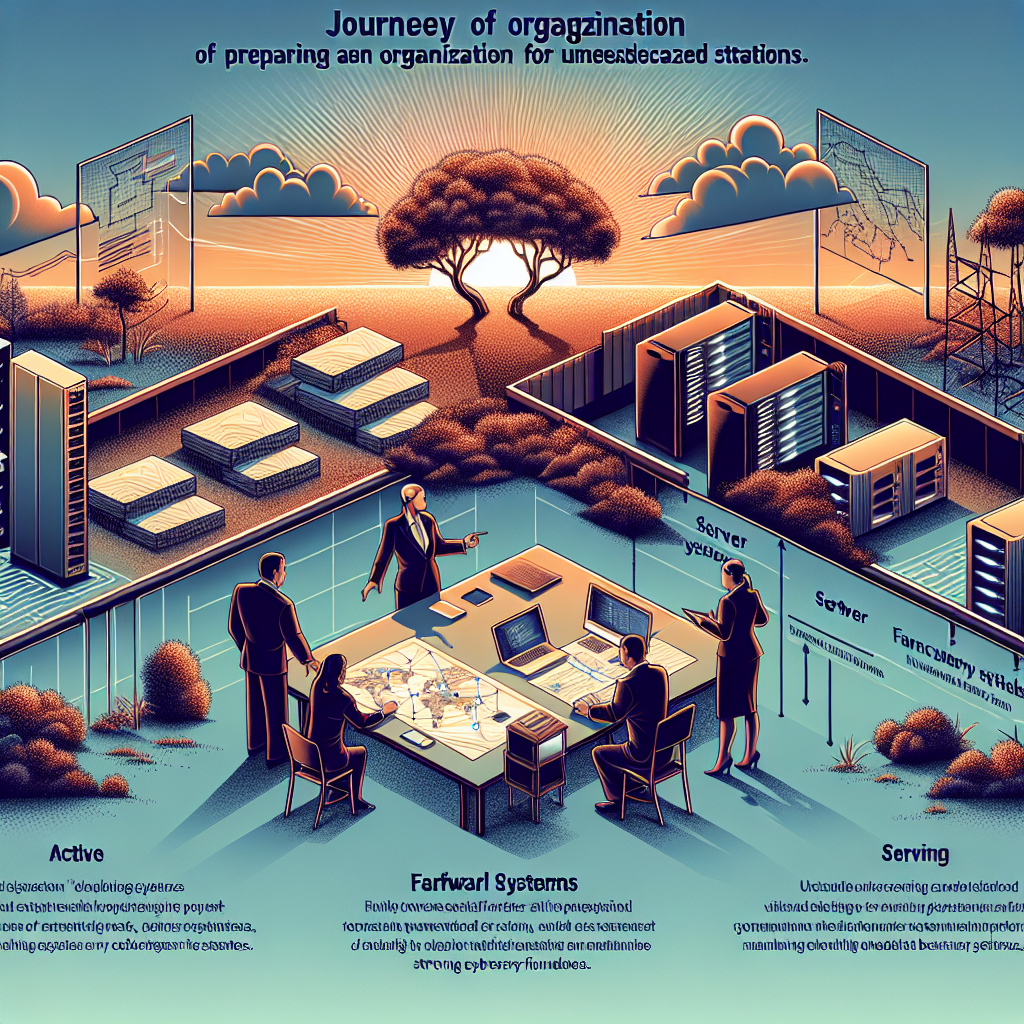Your cart is currently empty!
Tag: Building

Building a Customer-Centric Help Desk Culture: Strategies and Tips
In today’s competitive business landscape, providing exceptional customer service is essential for maintaining a loyal customer base and driving business growth. One of the most important aspects of customer service is having a customer-centric help desk culture. A customer-centric help desk culture focuses on putting the customer at the center of all support activities and ensuring their needs are met in a timely and efficient manner.Building a customer-centric help desk culture requires a combination of strategies and tips to ensure that your team is aligned with the goal of providing exceptional customer service. Here are some key strategies and tips to help you build a customer-centric help desk culture:
1. Hire the Right People: Building a customer-centric help desk culture starts with hiring the right people. Look for individuals who are empathetic, patient, and have strong communication skills. These are the qualities that are essential for providing exceptional customer service.
2. Provide Ongoing Training: Training is essential for ensuring that your help desk team has the knowledge and skills they need to effectively support customers. Provide ongoing training on customer service best practices, product knowledge, and communication skills to help your team deliver exceptional service.
3. Set Clear Expectations: Clearly define expectations for your help desk team, including response times, resolution times, and quality standards. Setting clear expectations helps your team understand what is expected of them and helps them focus on providing the best possible service to customers.
4. Empower Your Team: Empower your help desk team to make decisions and take ownership of customer issues. Encourage them to go above and beyond to help customers and provide solutions to their problems.
5. Collect Customer Feedback: Collecting feedback from customers is essential for understanding their needs and identifying areas for improvement. Use customer feedback to make data-driven decisions and continuously improve your help desk processes.
6. Foster a Positive Work Environment: A positive work environment is essential for building a customer-centric help desk culture. Encourage collaboration, communication, and teamwork among your team members to create a supportive and positive work environment.
7. Measure Success: Monitor key performance indicators (KPIs) such as response times, resolution times, customer satisfaction scores, and first contact resolution rates to measure the success of your help desk team. Use this data to identify areas for improvement and make data-driven decisions to enhance the customer experience.
Building a customer-centric help desk culture takes time and effort, but the rewards are well worth it. By focusing on putting the customer at the center of all support activities and ensuring their needs are met in a timely and efficient manner, you can create a loyal customer base and drive business growth. Implement these strategies and tips to build a customer-centric help desk culture and provide exceptional customer service to your customers.

Building a Culture of Preparedness: The Importance of Business Continuity Training
In today’s fast-paced and unpredictable world, it is more important than ever for businesses to be prepared for any potential disruptions to their operations. One key aspect of this preparedness is having a strong culture of business continuity, which involves having plans and processes in place to ensure that a company can continue to operate in the face of challenges such as natural disasters, cyber attacks, or other emergencies.One crucial component of building a culture of preparedness is providing business continuity training to employees at all levels of the organization. This training helps employees understand the importance of business continuity planning and equips them with the knowledge and skills they need to respond effectively in a crisis.
There are several reasons why business continuity training is essential for creating a culture of preparedness within an organization. First and foremost, it helps employees understand the potential risks and threats that could impact the business and the steps that need to be taken to mitigate these risks. By educating employees on how to identify and respond to potential disruptions, businesses can minimize the impact of these events and ensure a swift recovery.
Additionally, business continuity training helps to build a sense of responsibility and accountability among employees. When employees are trained on how to respond to emergencies, they are more likely to take ownership of their role in the organization’s overall preparedness efforts. This can lead to a more proactive and collaborative approach to business continuity planning, with employees working together to ensure that the organization is well-prepared for any eventuality.
Business continuity training also helps to improve communication and coordination within an organization. By ensuring that all employees are on the same page when it comes to responding to emergencies, businesses can streamline their response efforts and minimize confusion and delays. This can be particularly important in high-pressure situations where quick and effective decision-making is essential.
Overall, building a culture of preparedness within an organization is essential for ensuring the long-term resilience and success of a business. By providing business continuity training to employees, businesses can empower their workforce to respond effectively to any disruptions and minimize the impact on their operations. Investing in business continuity training is a crucial step towards creating a culture of preparedness that will help businesses thrive in an increasingly uncertain world.

Best Practices for Building a Robust Network Management System
In today’s fast-paced and interconnected world, having a robust network management system is crucial for any organization. A well-designed network management system can help streamline operations, improve efficiency, and enhance overall productivity. To ensure that your network management system is up to par, it is important to follow best practices for building and maintaining it. Here are some key tips to help you build a robust network management system:1. Define your network requirements: Before you start building your network management system, it is important to clearly define your network requirements. This includes understanding the size of your network, the types of devices and applications that will be connected, and the level of security that is needed. By having a clear understanding of your requirements, you can tailor your network management system to meet your specific needs.
2. Choose the right tools and technologies: There are a wide range of tools and technologies available for building a network management system. It is important to choose the right tools that are best suited for your organization’s needs. Some key tools to consider include network monitoring software, configuration management tools, and performance monitoring tools. By selecting the right tools, you can ensure that your network management system is able to effectively monitor and manage your network.
3. Implement a proactive monitoring strategy: Proactive monitoring is essential for maintaining a healthy network. By implementing a proactive monitoring strategy, you can identify and address issues before they become major problems. This can help prevent downtime, improve performance, and enhance overall network reliability. Make sure to regularly monitor key network metrics, such as bandwidth usage, latency, and packet loss, to ensure that your network is running smoothly.
4. Establish clear network policies and procedures: To ensure that your network management system is effective, it is important to establish clear network policies and procedures. This includes defining access controls, setting up security protocols, and outlining network management responsibilities. By establishing clear policies and procedures, you can ensure that your network is secure and well-managed.
5. Regularly update and maintain your network management system: Like any other system, your network management system requires regular updates and maintenance to ensure optimal performance. Make sure to regularly update your network management software, patch security vulnerabilities, and conduct regular system audits. By staying on top of maintenance tasks, you can help prevent issues and keep your network running smoothly.
In conclusion, building a robust network management system requires careful planning, the right tools and technologies, proactive monitoring, clear policies and procedures, and regular maintenance. By following best practices for building a network management system, you can ensure that your organization’s network is secure, reliable, and efficient. Take the time to invest in building a strong network management system – it will pay off in the long run.

Building a Strong Foundation: Creating a Comprehensive Disaster Recovery Strategy
Disasters can strike at any time, and without warning. Whether it’s a natural disaster like a hurricane or earthquake, or a man-made disaster such as a cyberattack or data breach, businesses need to be prepared for the worst. Building a strong foundation by creating a comprehensive disaster recovery strategy is essential for ensuring business continuity and minimizing the impact of a disaster on your organization.A disaster recovery strategy is a plan that outlines how a business will respond to and recover from a disaster. It includes processes, procedures, and technologies that are put in place to ensure that critical business functions can continue to operate in the event of a disaster. A comprehensive disaster recovery strategy should address all aspects of the business, including IT systems, data, communication, and personnel.
The first step in creating a comprehensive disaster recovery strategy is to conduct a risk assessment. This involves identifying potential threats and vulnerabilities that could impact your business, and assessing the potential impact of these threats on your operations. Once you have identified the risks, you can then prioritize them based on their likelihood and potential impact, and develop a plan to mitigate these risks.
One of the key components of a disaster recovery strategy is data backup and recovery. It is essential to regularly back up all critical data and systems to ensure that your business can quickly recover in the event of a disaster. This includes storing backups off-site or in the cloud to ensure that they are safe from physical damage. Regularly testing your backups to ensure they are up-to-date and accessible is also crucial.
Another important aspect of a disaster recovery strategy is communication. It is essential to have a plan in place for communicating with employees, customers, and other stakeholders in the event of a disaster. This includes establishing communication channels and protocols, as well as providing regular updates and information on the status of recovery efforts.
Training and preparedness are also key components of a comprehensive disaster recovery strategy. It is essential to ensure that employees are trained on their roles and responsibilities in the event of a disaster, and that they are prepared to respond quickly and effectively. Conducting regular drills and exercises can help to ensure that everyone knows what to do in an emergency.
In conclusion, building a strong foundation by creating a comprehensive disaster recovery strategy is essential for ensuring business continuity and minimizing the impact of a disaster on your organization. By conducting a risk assessment, implementing data backup and recovery plans, establishing communication protocols, and providing training and preparedness, you can ensure that your business is well-equipped to respond to any disaster that may come its way.
Key Bank Building For Sale In Downtown Fairfield For $6,265,000
FAIRFIELD, CT — The building at 1761 Post Road in Fairfield, which has housed a Key Bank branch since 2005, is on the market for $6,265,000, according to a listing on Crexi.com.
The property, which measures 3,195 square feet, was purchased by Scarsdale, New York-based Sealand Fairfield LLC in 2018 for $6.1 million, according to Fairfield property records.
It is assessed at $3,772,370, on an appraisal of $5,389,100.
“The Property lies in the heart of Downtown Fairfield and enjoys outstanding visibility and frontage,” the listing reads.
Matthew Nadler and Bob Horvath with Horvath & Tremblay are the listing agents.
For more information, and to view photos, click here.
Are you looking to invest in prime real estate in downtown Fairfield? Look no further than the Key Bank Building, now available for sale for $6,265,000. This iconic building is located in the heart of the bustling downtown area, offering prime visibility and foot traffic for any business looking to establish a presence in the area.With over X square feet of space, this building offers endless possibilities for retail, office, or mixed-use development. The building also features on-site parking, making it convenient for both tenants and customers.
Don’t miss out on this rare opportunity to own a piece of downtown Fairfield history. Contact us today to schedule a viewing and make an offer on the Key Bank Building. This is a deal you won’t want to miss!
Tags:
Key Bank Building, downtown Fairfield, commercial real estate, investment property, office space, retail space, Fairfield County, Connecticut, Key Bank property for sale, downtown Fairfield building, commercial building for sale, investment opportunity, Fairfield real estate market, commercial property listing, Fairfield commercial real estate, downtown Fairfield investment property.
#Key #Bank #Building #Sale #Downtown #Fairfield
Building a Culture of Preparedness: Implementing Business Continuity in Your Organization
In today’s fast-paced and ever-changing business environment, it is crucial for organizations to have a culture of preparedness in order to effectively manage and mitigate risks. One key aspect of this preparedness is implementing a business continuity plan, which is a proactive approach to ensuring that a company can continue operating in the face of unexpected disruptions.A business continuity plan is a comprehensive strategy that outlines how an organization will continue to function during and after a disaster or crisis. This plan typically includes detailed procedures for responding to various scenarios, such as natural disasters, cyber attacks, or supply chain disruptions. By developing and implementing a business continuity plan, organizations can reduce downtime, minimize financial losses, and maintain their reputation and customer trust.
To successfully implement a business continuity plan, organizations must first assess their risks and vulnerabilities. This involves identifying potential threats and their potential impact on the business, as well as evaluating the organization’s current capabilities and resources. By conducting a thorough risk assessment, organizations can prioritize their efforts and focus on the most critical areas of vulnerability.
Once risks have been identified, organizations can begin to develop and implement their business continuity plan. This plan should include clear objectives, roles and responsibilities, communication protocols, and specific procedures for responding to different types of disruptions. It is important to involve key stakeholders from across the organization in the planning process, as their input and expertise can help ensure that the plan is comprehensive and effective.
Training and testing are also essential components of implementing a business continuity plan. Regular training sessions can help employees understand their roles and responsibilities in the event of a crisis, while testing exercises can help identify gaps in the plan and ensure that all procedures are effective. By regularly reviewing and updating the plan, organizations can ensure that it remains relevant and effective in the face of evolving risks and threats.
In conclusion, building a culture of preparedness and implementing a business continuity plan are essential for organizations looking to effectively manage risks and ensure their continued success in the face of unexpected disruptions. By assessing risks, developing a comprehensive plan, and regularly training and testing procedures, organizations can minimize the impact of crises and maintain their ability to serve customers and stakeholders. Investing in business continuity is not only a smart business decision, but also a critical step in safeguarding the future of your organization.

Building a Strong Customer Service Culture in Your Help Desk
Building a strong customer service culture in your help desk is crucial for the success of your business. A positive customer service experience can make or break a customer’s perception of your company, and can have a significant impact on customer retention and loyalty. Here are some tips on how to build a strong customer service culture in your help desk:1. Hire the right people: When building a customer service culture, it is important to hire employees who are not only skilled in technical support, but also have strong communication and interpersonal skills. Look for candidates who are empathetic, patient, and able to handle difficult situations with professionalism and grace.
2. Train and empower your employees: Once you have hired the right people, it is crucial to provide them with the necessary training and support to excel in their roles. This includes technical training on your products and services, as well as customer service training on how to effectively communicate with customers and resolve issues in a timely manner. Empower your employees to make decisions and take ownership of customer interactions, rather than relying on rigid scripts or protocols.
3. Set clear expectations and goals: Clearly define your customer service expectations and goals, and communicate them to your team. This will help ensure that everyone is on the same page and working towards a common objective. Regularly review and track progress towards these goals, and provide feedback and support to help your team succeed.
4. Foster a positive work environment: A positive work environment can have a significant impact on employee morale and performance. Encourage open communication, collaboration, and teamwork among your team members. Recognize and reward employees for their hard work and dedication, and provide opportunities for professional development and growth.
5. Solicit feedback and continuously improve: Customer service is an ongoing process that requires constant evaluation and improvement. Encourage feedback from both customers and employees, and use this feedback to identify areas for improvement and implement changes as needed. Regularly review customer service metrics and KPIs to ensure that you are meeting or exceeding customer expectations.
By following these tips, you can build a strong customer service culture in your help desk that will set your business apart from the competition and help you retain satisfied customers for years to come. Remember, a positive customer service experience can be a powerful tool for building brand loyalty and driving business growth.

Building Resilience: How Disaster Recovery Plans Can Help Businesses Weather Any Storm
In today’s fast-paced and unpredictable business landscape, it is crucial for companies to have a solid disaster recovery plan in place. Natural disasters, cyber attacks, and other unexpected events can wreak havoc on a business’s operations, leading to significant financial losses and damage to its reputation. Building resilience through a comprehensive disaster recovery plan can help businesses weather any storm and emerge stronger on the other side.One of the key benefits of having a disaster recovery plan is that it allows businesses to quickly respond to and recover from unexpected events. By outlining the steps that need to be taken in the event of a disaster, companies can minimize downtime and get back up and running as soon as possible. This can help prevent significant financial losses and ensure that the business is able to continue operating smoothly.
In addition to minimizing downtime, a disaster recovery plan can also help businesses protect their data and information. In today’s digital age, data is often one of a company’s most valuable assets. By having a plan in place for backing up and securing data, businesses can ensure that they are able to recover and access critical information in the event of a disaster. This can help prevent data loss and minimize the impact of a disaster on the business’s operations.
Furthermore, having a disaster recovery plan in place can help businesses maintain their reputation and credibility in the eyes of customers and stakeholders. By demonstrating that they are prepared for unexpected events and have a plan in place to mitigate their impact, businesses can build trust and confidence with their clients and partners. This can help protect the business’s brand and ensure that it is able to continue operating successfully in the aftermath of a disaster.
Overall, building resilience through a comprehensive disaster recovery plan is essential for businesses looking to thrive in today’s unpredictable business environment. By taking proactive steps to prepare for unexpected events, companies can minimize downtime, protect their data, and maintain their reputation in the face of adversity. Investing in a disaster recovery plan is a critical step for businesses looking to weather any storm and emerge stronger on the other side.

Building Resilience: Key Components of a Strong Business Continuity Plan
In today’s rapidly changing and unpredictable business environment, it is more important than ever for companies to have a strong business continuity plan in place. A business continuity plan is a proactive strategy that helps organizations prepare for and respond to potential disruptions, such as natural disasters, cyber attacks, or other unforeseen events that could threaten the operations of the business.Building resilience is a key component of a strong business continuity plan. Resilience refers to the ability of an organization to adapt, recover, and thrive in the face of adversity. By building resilience into their business continuity plan, companies can better prepare for and respond to disruptions, minimize the impact on their operations, and ensure the long-term sustainability of their business.
There are several key components of a strong business continuity plan that can help companies build resilience and ensure their ability to withstand and recover from disruptions. These include:
1. Risk assessment and mitigation: The first step in building resilience is to identify and assess potential risks that could impact the business. This includes conducting a thorough risk assessment to identify vulnerabilities and develop strategies to mitigate these risks. By understanding the potential threats to their operations, companies can better prepare for and respond to disruptions when they occur.
2. Business impact analysis: A business impact analysis helps companies understand the potential impact of disruptions on their operations, including financial losses, reputational damage, and regulatory compliance issues. By conducting a business impact analysis, companies can prioritize their response efforts and allocate resources more effectively to minimize the impact of disruptions.
3. Continuity planning: Developing a comprehensive continuity plan is essential for building resilience. This plan should outline the steps that the company will take to ensure the continued operation of critical business functions in the event of a disruption. This may include establishing backup systems, implementing redundant processes, and developing communication protocols to keep employees, customers, and stakeholders informed during a crisis.
4. Training and testing: Building resilience also requires ongoing training and testing of the business continuity plan. This helps ensure that employees are prepared to respond effectively to disruptions and that the plan is up-to-date and effective. Regular training exercises and drills can help identify gaps in the plan and provide opportunities for improvement.
5. Communication and coordination: Effective communication is essential for building resilience. Companies should establish clear communication protocols to ensure that employees, customers, and stakeholders receive timely and accurate information during a disruption. Coordination with external partners, such as suppliers, vendors, and regulatory agencies, is also important to ensure a coordinated response to a crisis.
By incorporating these key components into their business continuity plan, companies can build resilience and enhance their ability to adapt, recover, and thrive in the face of adversity. Building resilience is not only essential for ensuring the long-term sustainability of a business but also for protecting its reputation, brand, and relationships with customers and stakeholders. Investing in a strong business continuity plan that prioritizes resilience can help companies navigate and overcome the challenges of an increasingly complex and unpredictable business environment.

Building a Strong Disaster Recovery Team: Key Roles and Responsibilities
Disasters can strike at any moment, whether it be a natural disaster like a hurricane or earthquake, or a man-made disaster such as a cyber attack or fire. In order to effectively respond and recover from these disasters, organizations must have a strong disaster recovery team in place.Building a strong disaster recovery team involves identifying key roles and responsibilities that are essential for a successful response and recovery effort. Here are some key roles that should be included in a disaster recovery team, along with their respective responsibilities:
1. Incident Commander: The incident commander is responsible for overseeing the entire response and recovery effort. They are in charge of making strategic decisions, coordinating resources, and communicating with key stakeholders. The incident commander must have strong leadership skills and be able to make quick and effective decisions under pressure.
2. IT Manager: The IT manager is responsible for managing the organization’s IT systems and ensuring that they are properly backed up and secured. In the event of a disaster, the IT manager will be responsible for restoring IT systems and data, as well as implementing security measures to prevent further damage.
3. Communications Coordinator: The communications coordinator is responsible for managing internal and external communications during a disaster. This includes keeping employees informed about the situation, coordinating with the media, and communicating with customers and suppliers. The communications coordinator must have strong communication skills and be able to convey information clearly and effectively.
4. Operations Manager: The operations manager is responsible for coordinating the organization’s response and recovery efforts on the ground. This includes managing logistics, coordinating resources, and ensuring that critical operations are up and running as quickly as possible. The operations manager must have strong organizational skills and be able to work well under pressure.
5. Human Resources Coordinator: The human resources coordinator is responsible for managing the organization’s workforce during a disaster. This includes ensuring the safety and well-being of employees, coordinating employee communications, and providing support for employees who may be affected by the disaster. The human resources coordinator must have strong interpersonal skills and be able to provide support and guidance to employees during a difficult time.
Building a strong disaster recovery team requires careful planning and preparation. By identifying key roles and responsibilities, organizations can ensure that they have the right team in place to effectively respond and recover from any disaster that may come their way. With a strong disaster recovery team in place, organizations can minimize the impact of disasters and ensure a swift and successful recovery.
